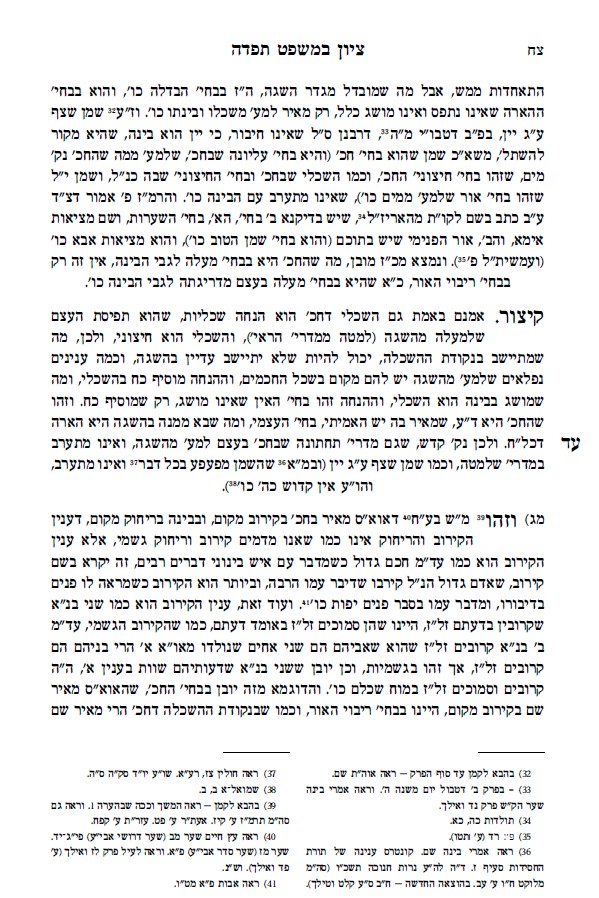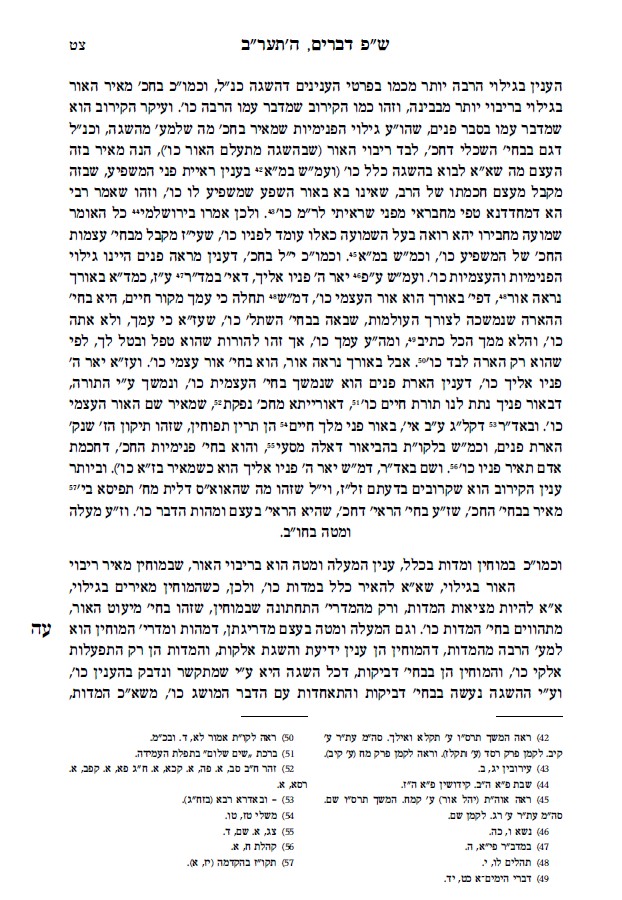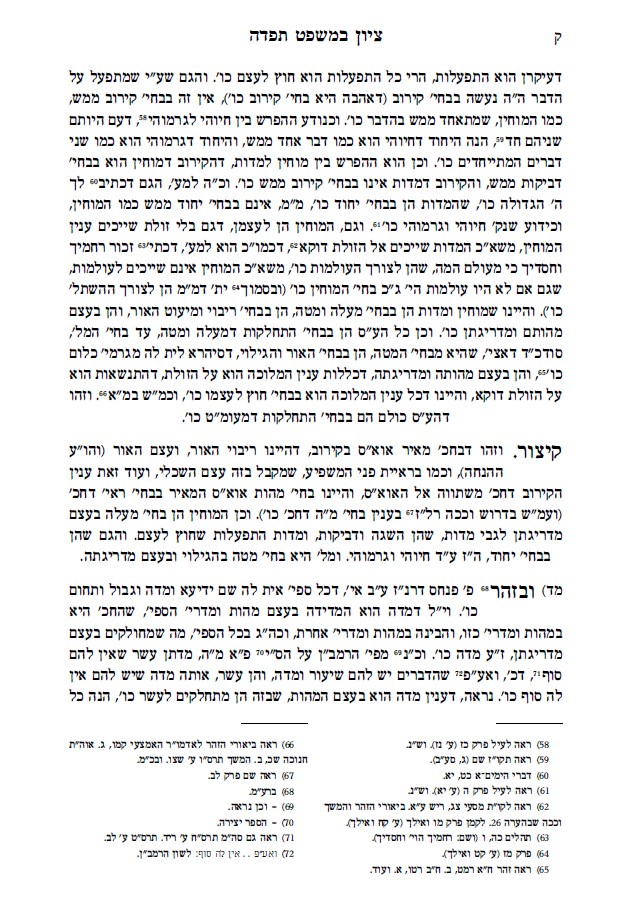AYIN BEIS | Existence Unplugged
Chapter 43: Hierarchy of the Spheres
Short Summary
The “spatial” structure of the sefirot is defined by both the intensity of their energy and their fundamental personalities, with chochma being the “closest,” i.e. the highest level of divine awareness, emotions more distant and apart, and malchut the “lowest” level with the least revealed energy.
Long Summary
[He now concludes the discussion that began in chapter 37 explaining the gradations of the light in the sefirot, as the Etz Chaim writes that in chochma the light shines “up close;” in binah from “a distance”].
This explain the words of the Etz Chaim that in chochma the light shines “up close” and in binah from “a distance:” Closeness and distance is not as we envision physical proximity. Rather, it refers to conceptual juxtaposition, with chochma being “closer” as in both 1) receiving more energy as well as 2) being fundamentally a higher state of being.
An example for this closeness is a great scholar who speaks at length with an average person. In so doing he draws the person close to him through transmitting to him an abundance of energy. This closeness is amplified when the scholar speaks to him with a pleasant and affable countenance. So too in chochma the divine energy shines “up close,” in abundance. Additionally, chochma also contains the essence of the concept, which is revealed in seeing the face of the teacher (the pleasant countenance). Moreover, chochma’s “closeness” to the divine is one of commonality — chochma is aligned with the divine that is beyond comprehension, like the close relationship between two individuals whose ideas are aligned with one another, like the closeness between cousins and relatives (kerovim).
This spatial hierarchy (which designates the levels of chochma and binah) also defines the position of intellect and emotions — with intellect being “higher” than emotions due to both above-mentioned factors: 1) A greater measure of energy, and 2) fundamentally and qualitatively a higher dimension.
The mind is superior to feelings in several ways: 1) It comprehends the very essence of the subject, while feelings experience only the emotional reaction to the subject, 2) It connects and bonds to the subject; excitement (feelings) about the subject is an outer experience (you are excited about something outside of you). 3) Intellect is self contained, while emotions require another individual outside of the person.
This spatial hierarchy defines the structure — higher and lower — of all the sefirot, all the way down to malchus, the lowest of all the sefirot, “lowest” both 1) in the degree of revealed energy – malchus, the moon, has no light of its own, and 2) in its fundamental character – malchus is only possible over others, meaning that its entire identity is outside of itself.
[This begins to wind down the discussion that began in chapter 33 about the spatial structure of existence. This discussion will continue and conclude in the next two chapters, 44-45].
Hebrew Text



Concepts
Chochma’s “closeness” to the divine. Intellect and emotions.

 Anchor
Anchor Breaker
Breaker Google Podcasts
Google Podcasts RadioPublic
RadioPublic Spotify
Spotify Pocket Casts
Pocket Casts